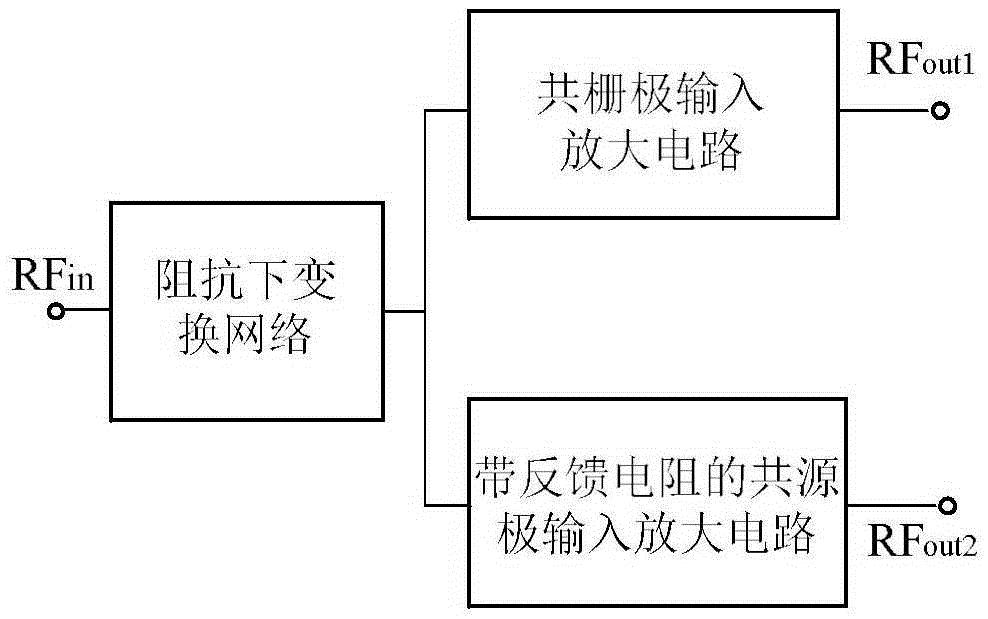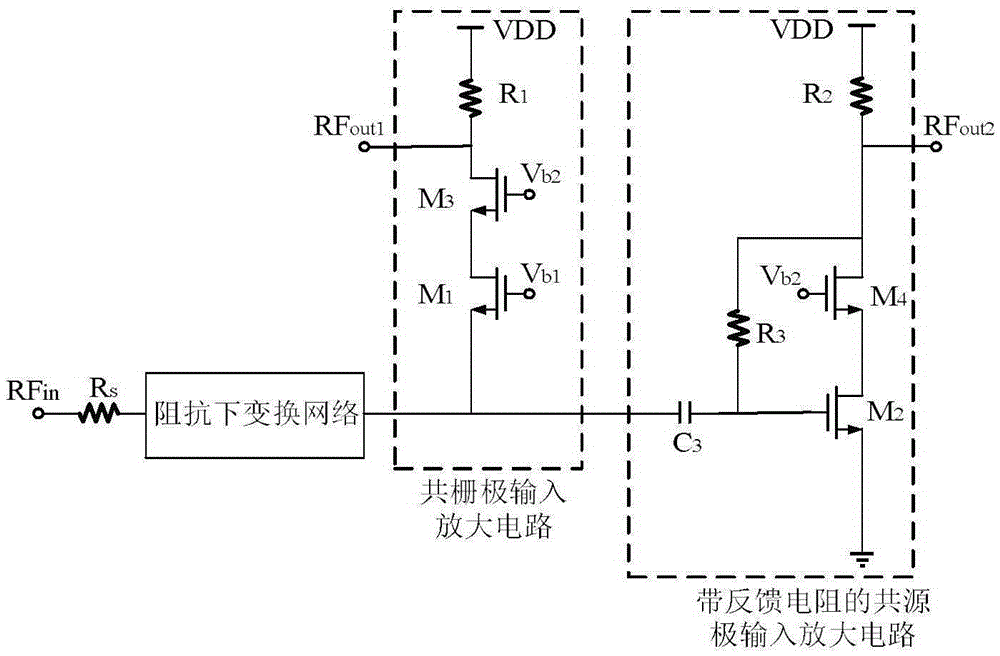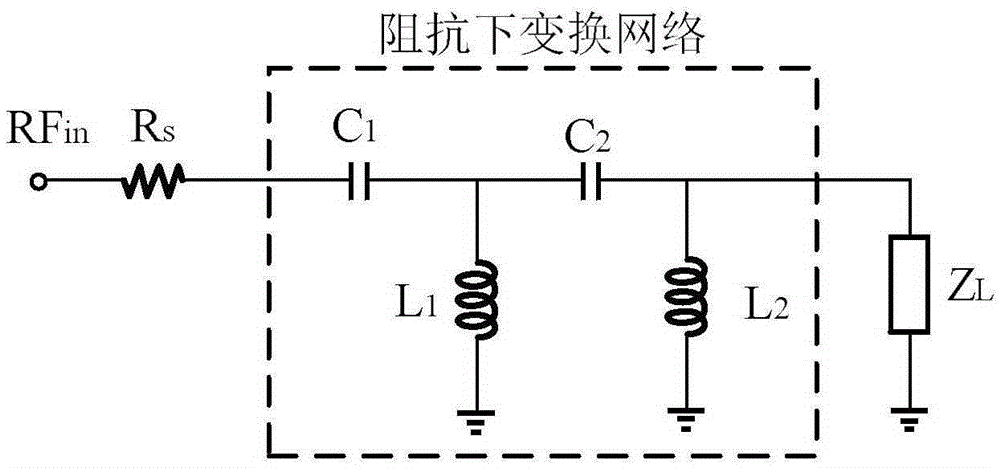Low-power-consumption bidirectional noise-reducing low-noise amplifier
A low-noise amplifier and low-power technology, which is applied in differential amplifiers, DC-coupled DC amplifiers, and improved amplifiers to reduce noise effects, etc. Advanced problems, achieve good input matching performance, reduce input impedance, and eliminate channel thermal noise
- Summary
- Abstract
- Description
- Claims
- Application Information
AI Technical Summary
Problems solved by technology
Method used
Image
Examples
Embodiment Construction
[0019] refer to figure 1 , figure 2 . In a preferred embodiment described in the following embodiments, the low-power bidirectional noise-reducing low-noise amplifier includes: an impedance down-conversion network, a common-gate amplifying circuit and a common-source amplifying circuit with a feedback resistor; a common-gate amplifying circuit Together with a common-source amplifier circuit with feedback resistors, it forms a low-noise amplifier circuit with single-end input and double-end output; wherein, the MOS transistors are all N-type metal oxide semiconductor field effect transistors. Both the common gate input amplifier circuit and the common source amplifier circuit with feedback resistors adopt the cascode structure. The common gate input amplifier circuit is composed of MOS transistor M1 connected in series with MOS transistor M3 and its load resistor R1 connected in series between the drain of MOS transistor M3 and the power supply VDD; the common source input a...
PUM
 Login to View More
Login to View More Abstract
Description
Claims
Application Information
 Login to View More
Login to View More - R&D
- Intellectual Property
- Life Sciences
- Materials
- Tech Scout
- Unparalleled Data Quality
- Higher Quality Content
- 60% Fewer Hallucinations
Browse by: Latest US Patents, China's latest patents, Technical Efficacy Thesaurus, Application Domain, Technology Topic, Popular Technical Reports.
© 2025 PatSnap. All rights reserved.Legal|Privacy policy|Modern Slavery Act Transparency Statement|Sitemap|About US| Contact US: help@patsnap.com



